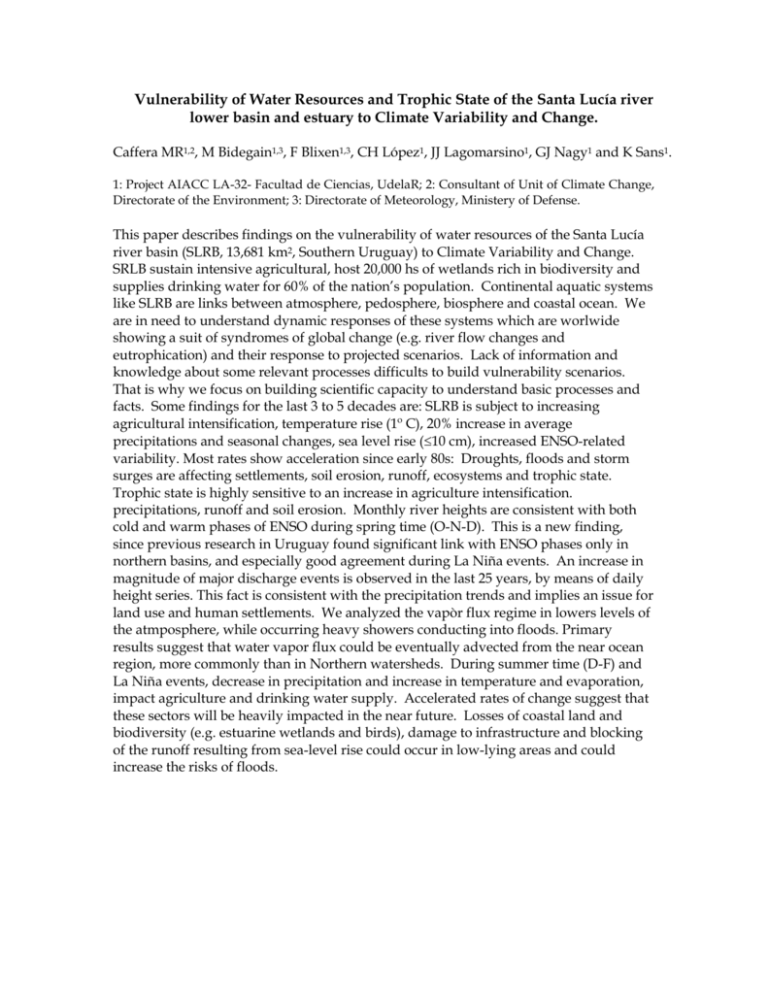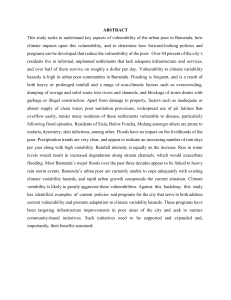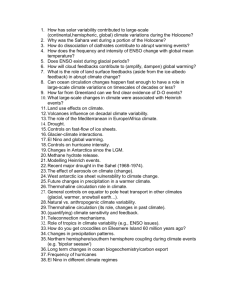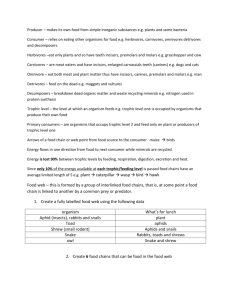Vulnerability of Water Resources and Trophic State of the Santa
advertisement

Vulnerability of Water Resources and Trophic State of the Santa Lucía river lower basin and estuary to Climate Variability and Change. Caffera MR1,2, M Bidegain1,3, F Blixen1,3, CH López1, JJ Lagomarsino1, GJ Nagy1 and K Sans1. 1: Project AIACC LA-32- Facultad de Ciencias, UdelaR; 2: Consultant of Unit of Climate Change, Directorate of the Environment; 3: Directorate of Meteorology, Ministery of Defense. This paper describes findings on the vulnerability of water resources of the Santa Lucía river basin (SLRB, 13,681 km2, Southern Uruguay) to Climate Variability and Change. SRLB sustain intensive agricultural, host 20,000 hs of wetlands rich in biodiversity and supplies drinking water for 60% of the nation’s population. Continental aquatic systems like SLRB are links between atmosphere, pedosphere, biosphere and coastal ocean. We are in need to understand dynamic responses of these systems which are worlwide showing a suit of syndromes of global change (e.g. river flow changes and eutrophication) and their response to projected scenarios. Lack of information and knowledge about some relevant processes difficults to build vulnerability scenarios. That is why we focus on building scientific capacity to understand basic processes and facts. Some findings for the last 3 to 5 decades are: SLRB is subject to increasing agricultural intensification, temperature rise (1º C), 20% increase in average precipitations and seasonal changes, sea level rise (10 cm), increased ENSO-related variability. Most rates show acceleration since early 80s: Droughts, floods and storm surges are affecting settlements, soil erosion, runoff, ecosystems and trophic state. Trophic state is highly sensitive to an increase in agriculture intensification. precipitations, runoff and soil erosion. Monthly river heights are consistent with both cold and warm phases of ENSO during spring time (O-N-D). This is a new finding, since previous research in Uruguay found significant link with ENSO phases only in northern basins, and especially good agreement during La Niña events. An increase in magnitude of major discharge events is observed in the last 25 years, by means of daily height series. This fact is consistent with the precipitation trends and implies an issue for land use and human settlements. We analyzed the vapòr flux regime in lowers levels of the atmposphere, while occurring heavy showers conducting into floods. Primary results suggest that water vapor flux could be eventually advected from the near ocean region, more commonly than in Northern watersheds. During summer time (D-F) and La Niña events, decrease in precipitation and increase in temperature and evaporation, impact agriculture and drinking water supply. Accelerated rates of change suggest that these sectors will be heavily impacted in the near future. Losses of coastal land and biodiversity (e.g. estuarine wetlands and birds), damage to infrastructure and blocking of the runoff resulting from sea-level rise could occur in low-lying areas and could increase the risks of floods.











